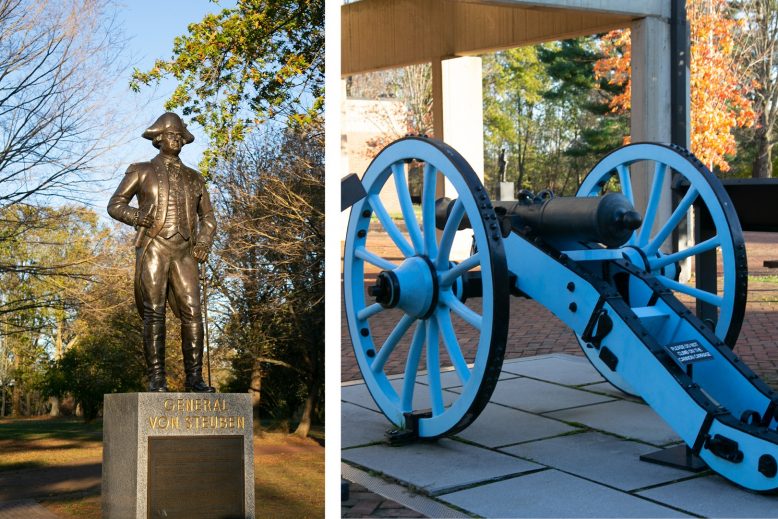
Just off Route 9 in western Monmouth County, hidden behind a 21st-century shield of strip malls and auto dealers, sprawls an 18th-century landscape little changed from the day when George Washington’s army fought the British here in one of the largest battles of the American Revolution.
About 25 miles of trails meander through Monmouth Battlefield State Park, 1,800 acres of woods, meadows and fields straddling the border of Freehold and Manalapan townships. More than 20,000 soldiers clashed here on June 28, 1778, and if you want to experience what it felt like for them on that sweltering day, when the heat claimed almost as many casualties as the cannons, wear heavy wool and visit in high summer. If you prefer a pastoral hike that also imparts a history lesson, autumn is more congenial.
The park offers a host of hikes for a variety of moods and interests. The main entrance off Route 33 leads to a large parking lot and visitors center. The trails that lead west from here loop through pleasant, rolling woodlands that didn’t have much to do with the battle itself. But if you go inside the sleek visitors center first to survey the artifacts and watch a short movie about the battle in the small theater, you’ll surely want to explore all of the park.
[RELATED: The Best Fall Day Trips in New Jersey]
The British had evacuated Philadelphia and were marching to New York when Washington’s army, fresh off the momentous winter in Valley Forge, intercepted them here. When the movie ends, the screen opens to reveal a wide window with a panoramic view of the sloping fields on which the battle unfolded.
If you’re up for a 4- or 5-mile hike, start here and head north, guided by markers that tell the story of the battle along the way. The visitors center commands the hill where General Nathaniel Greene moved his cannons late in the afternoon of the battle, firing on the British artillery and forcing it back. As you walk down the hill and across the brook, you are traversing roughly the front line—the Americans to the west, the British to the east.
A crosswalk over Route 522 will get you to the less-used trails in the park’s north section. (You can access these trails directly from a couple of small parking areas along Route 522.) Here, you can walk along the hill where Washington rode his horse back and forth, rallying his troops, or follow the trail on which the Marquis de Lafayette led his men. You can also visit the spring that provided water to the soldiers that day, where the legend of Molly Pitcher, the woman who supposedly carried it to them, was born. Finally, wander through the cemetery of Old Tennent Church, which was witness to the battle and where some of its casualties are buried.
History tells us the battle was a draw, but you can still reward yourself after your visit with a local autumn delight: an apple cider doughnut from one of the two country stores, nearby Wemrock Orchards and Battleview Orchards.
No one knows New Jersey like we do. Sign up for one of our free newsletters here. Want a print magazine mailed to you? Purchase an issue from our online store.
